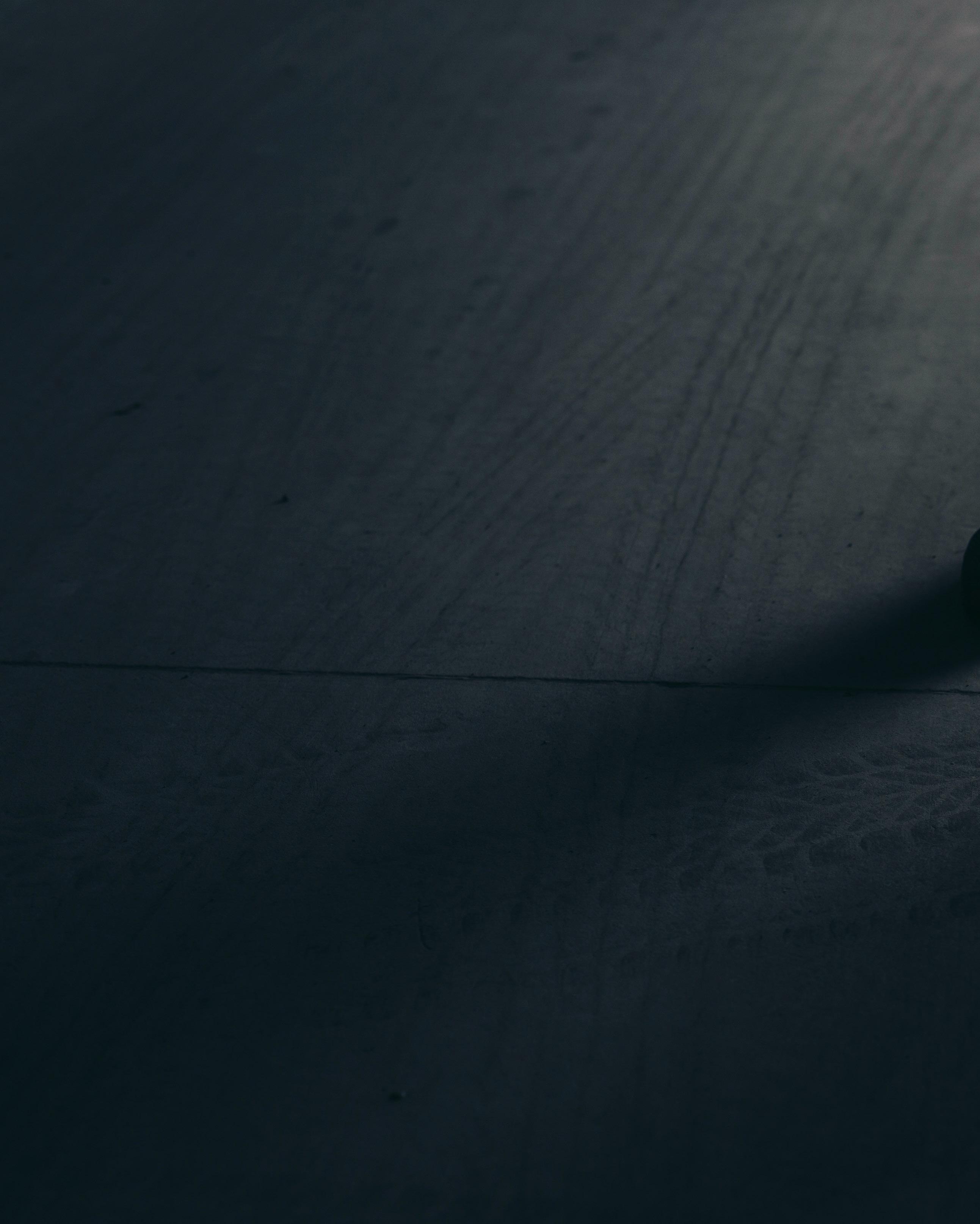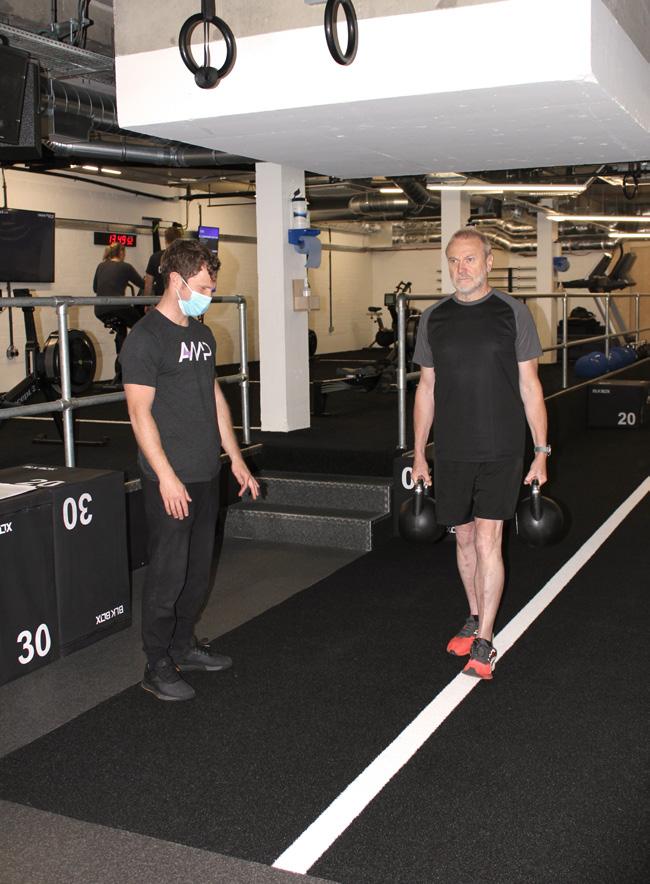
7 minute read
Stronger together
How a holistic rehabilitation and treatment programme designed to bridge the gap between doctors and fitness specialists is giving patients like Paul Mylrea, who felt some of the more extreme physical effects of COVID-19, a chance to fight back
Words: Julia Price
STRONG ER TOGETHER

Social distancing might be our new normal, but over in the Harley Street Medical Area, two centres of expertise located just a few hundred metres apart have been showing why, at a time when safety is measured in distance (and isolation prescribed as a remedy), the working closely together is still important.
In the world of professional sport, open communication channels between trainers and medical professionals are a vital part of an athlete’s rehabilitation journey in the aftermath of injury. It is a multidisciplinary approach that champions synergy—where physical therapy interventions are supplemented by medical expertise; physical recovery upheld by psychological readiness. Holism is the name of the game.
In recent months, Isokinetic, a sports medicine and rehabilitation clinic on Harley Street, has been working with AMP Athletic, a personal training gym located a short walk away, to offer patients like Paul Mylrea a model of rehabilitation and treatment usually reserved for elite-sport. The tailored programme has been designed to bridge what can often be a wide gap between the doctors, physiotherapists and fitness specialists involved in a patient’s recovery process. The dual approach was developed to ensure exercise is controlled and monitored by medical professionals in a safe way, mirroring the professional sport environment.
Mike Davison, who heads up Isokinetic’s Harley Street clinic, says: “For patients, our integrated approach goes deeper than physiotherapy, with the objective of restoring optimal performance—and then maintaining it. It combines the latest technology and neuro-motor exercises to prevent the reoccurrence of injury, supported by clinical evaluation. Key to this is enlisting the support of specialist facilities to deliver to patients a complete care package tailored to their needs and to support their ongoing progression.”
This collaborative programme, which offers an evidence-based approach to rehabilitation, has been central to Paul’s impressive recovery. In April 2020, seriously ill with COVID-19, he was left hospitalised and fighting the more severe, physical effects of the illness. While in intensive care and receiving treatment, Paul suffered two massive strokes within a couple of days of each other—both caused by the coronavirus infection. Although typically considered a lung infection, COVID-19 has been found to cause blood clots that can deprive vital areas of the brain of blood supply and lead to severe stroke, including in patients as young as 30. The symptoms can leave patients with weakness or paralysis, lack of sensation, facial droop and speech impairment.
The condition left Paul unable to get out of bed when he awoke in hospital. The second stroke he suffered was so big, in fact, that doctors thought it likely he would not survive, or would be left hugely disabled. With the pandemic seriously affecting stroke treatment and care, Paul was also unable to rely on standard rehabilitation therapy. “When I was in hospital I could only walk with I have known Paul personally for a little while and his story just connected with me, not only because of his survival but also because of his willingness to live life, pursue activity and fight back

a walker and two people walking with me—that was in April,” he recounts. “The NHS is great, but unfortunately they cannot always bring you back to the level of fitness you had before or help you enjoy every element of life.”
The 64-year-old, who is director of communications at Cambridge University, is now able-bodied. His physical recovery has been remarkable, which Paul credits to the holistic support he received from AMP Athletic and Isokinetic. Following his debilitating encounter with COVID, he underwent a tailored rehabilitation programme devised by Isokinetic to help with his strength and coordination and reduce the immobility-related complications of stroke. This was followed by ongoing maintenance and performance at AMP Athletic focused on therapeutic exercises, muscle strengthening and movement.
“Working with the trainers at AMP has been fantastic,” says Paul. “The trainers have noticed things that I wasn’t aware of and have helped me fix them. One example of this is the stroke affected my right-hand side—I am naturally right-handed, and I thought things were going well, but in reality I had lost muscle mass and strength. These are the kind of things that if you don’t fix will affect you later on in life.”
When it comes to stroke, the main physical problem facing survivors is weakness in their limbs, according to the Stroke Association, and this can be improved with a combination of strengthening, stretching and endurance exercises. Meanwhile, studies indicate that prolonged immobility among patients can result in significant functional decline. Key to combatting this is a multidisciplinary approach combining medical expertise with exercise and physiotherapy.
Rehabilitation success relies on creating a less disjointed experience for patients. Matt Curley, head coach at AMP Athletic, says: “With experience of working with sport injury clinics over the years, we understand there is a gap between physiotherapy and returning back to exercise. We pride ourselves on bridging that gap. It is important to get patients out of the clinical environment and get them back into a gym for their mental health. Ultimately the relationship between us and the medical professionals at Isokinetic has been really good for our clients, as in Paul’s case. We have open lines of communication where in the past I think people would have been intimidated to work with medical professionals. In professional sport the channels of relationship and communication have always been open and that is what we have replicated.”
It isn’t just Paul’s physical condition that has seen a marked improvement. “Medical evidence shows that keeping yourself fit doesn’t just have an impact on your body but also your mind and mental health,” says Paul. “I feel great now—not likely to do any marathons, but so much closer to my old self. It’s fantastic that AMP and Isokinetic work together in this way, as quite often there is a gap between the medical and the health side. It’s been great to benefit from an integrated approach with both organisations working together to get the best outcome for me.”
Doctors have attributed Paul’s extraordinary recovery to his previous very high level of fitness. While lockdown has no doubt had an impact on our daily routines in recent months, the benefits of exercise, both physically and mentally, are well-documented. In fact, research shows that exercise can reduce the risk of major illnesses such as heart disease, stroke, type 2 diabetes and cancer by up to 50% and lower the risk of early death by up to 30%. All of these are conditions that can increase susceptibility to the worst rigours of COVID-19.
“I have known Paul personally for a little while and his story just connected with me, not only because of his survival but also because of his willingness to live life, pursue activity and fight back,” says Mike. “In essence, to use exercise to combat stress, be an inspiration to other people around you and to think proactively about your future. Exercise is a form of anti-ageing, but what you’re trying to do is live healthily for as long as possible.”
If there’s one thing we’ve learnt this past year it’s that the global pandemic can only be ended by a unified approach. And it is this collaborative spirit that Isokinetic and AMP Athletic are trying to embody. Located one street apart, the two facilities are combining their expertise in medicine and rehabilitation to help patients who have been physically affected by COVID-19.
Mike concludes: “Isokinetic is part of the Harley Street Medical Area, an area that we like to think as being the world’s largest hospital. The area has world-class specialists but it’s important to ensure we have bridges of connectivity and communication, and also understand when we are not best placed for the patient experience. I’ve known AMP for two years and we have a great ongoing relationship. I think it’s an example of two groups within HSMA in health and wellbeing working together to give Paul and other patients like him the opportunity to live their lives as well as they can.”
Isokinetic 11 Harley Street London W1G 9PF 020 7486 5733 isokinetic.com
AMP Athletic 14a Beaumont Mews London W1G 6EQ 020 7486 9127 amp.fit

